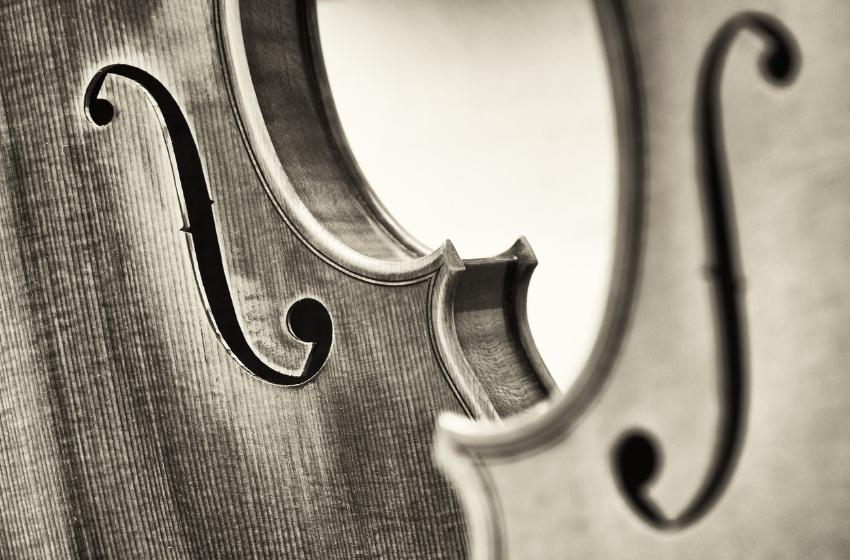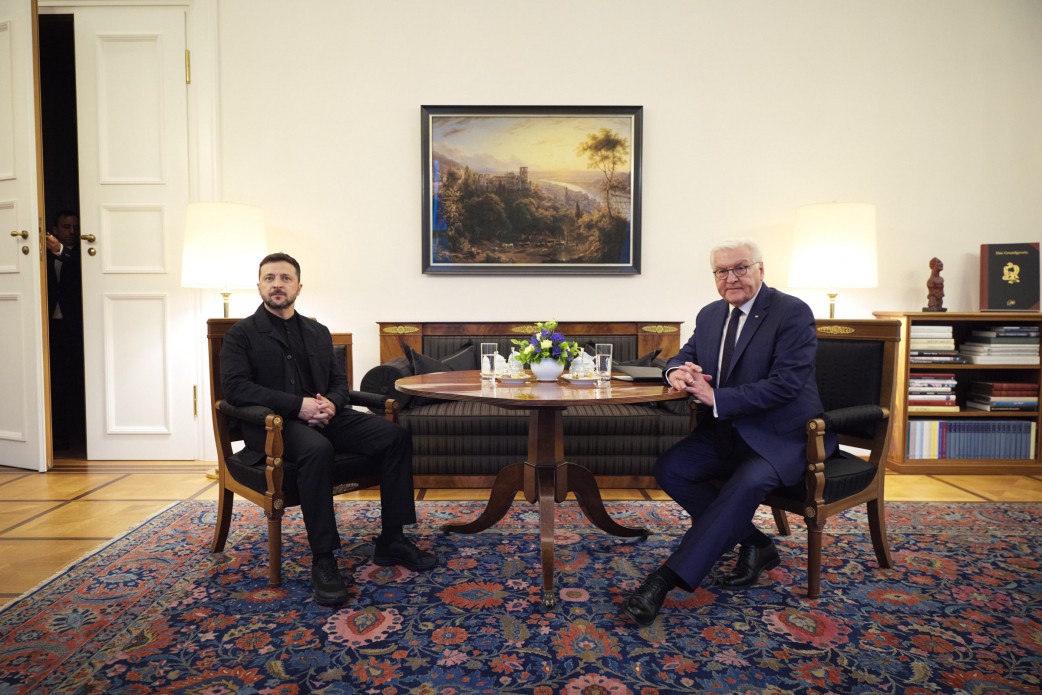His biography is poorly studied: according to some sources, he was born in 1862, according to others - in 1864. It is known that he was born in Odessa. He died in the fall of 1941, presumably in the Odessa ghetto. There are no detailed data on the family, professional education. And this despite the fact that Lev Vladimirovich Dobriansky is considered the world's largest violin maker.
With your violin "Germany" you not only reached the perfection of Italian masters, but also surpassed them ... The strings of my Stradivari now seem to me to be a twine.
Jan Kubelik - "Czech Paganini", 1910
In the late 1920s, an unusual examination of the violin was carried out at the Odessa customs. The subject of the examination was a violin brought from abroad. This event was so significant that several years later it attracted the attention of the newspaper Izvestia, which wrote:
"It was an instrument of those noble outlines, in which unknown masters, as it were, anticipated the streamlined shape of modern machines.. To determine the value of this ancient instrument, it was decided to invite experts. Famous connoisseurs, among whom were professors, unanimously declared that the instrument was obviously of ancient work and fabulous price - so remarkable is the power and beauty of its sound. But, unfortunately, it is not possible to determine the name of the master.. Finally, the last expert entered the customs chamber - a little old man in a piece vest over his shirt and glasses tied with a thread."
None of the greatest inventions of human genius, except perhaps the wheel, have proved to be as resistant to the test of time as the violin. The relentless time machine did not take her into its millstones. Her delicate body remained young and graceful, not a single fold from the "portrait of Dorian Gray" fell on her beautiful face, and if there were any abrasions and scratches, they were covered by the skillful makeup of the later restorations. Having started its lineage from the ancient bowed instruments of the South Slavs and having reached perfection in the work of Italian masters of the late 17th - mid-18th centuries, and today it is the same as it was at the time of all Louis, starting from the XIV.
For many musicians, collectors, lovers of rarities, the passion of owning a violin by the old Italian masters overshadowed all other earthly passions.
The treasure is priceless, although invisible. This treasure is sound. The one thanks to which the violin was crowned on the throne of the "queen of the instruments". Warm, soulful, approaching in expression to the human voice.
By the middle of the 18th century, the Italian masters Antonio Stradivari and Giuseppe Guarneri del Gesú had perfected not only the appearance, decorative and artistic design of the violin, its ergonomics, ideally adapted to the performer's hand, but also the sound. Despite careful research by violin makers and acousticians of the subsequent time, it was not possible to reveal the full recipe for the "Italian sound". The unsurpassed Stradivarius has become the same axiom as the fifth postulate of Euclid. And suddenly - a sensation! At the turn of the 19th and 20th centuries, a man was found who declared:
The secret of the Italian violin is not a secret, and in general it is made wrong! Any popular violin can sound like a craftsman, and a Stradivarius violin can be made even better than Stradivari himself could do!
Who is this impudent daredevil who dared to encroach on the unshakable, this Lobachevsky from the violin ?!
But let's return to the Odessa customs and see what the old man was doing there with the mysterious violin.
With a habitual movement, he placed the violin on his collarbone and ran his bow over it. Beautiful sounds escaped from this small body, filling the customs chamber, smelling of carbolic acid and sealing wax ...
Meanwhile, the old man had already put down the violin and with tiny tweezers broke off a piece of ancient varnish. And on the bare tree everyone saw a small but intelligible flourish “L. Dobryansky. Odessa. 1908".
"This is my violin, â€said the old man in unexpected silence. - I did it ..."

Indeed, it was one of Dobriansky's violins, which he once sold to some virtuoso in Europe, glorified in many countries and, two decades later, returned to the hands of its creator by a bizarre play of fate.
Well, and the old man himself, who modestly lived in Odessa and who had to do with minor repairs of musical instruments, was none other than a brilliant master, about whom the Big Encyclopedia, published in 1902 under the editorship of S.N. Yuzhakov, impassively recorded: “Dobriansky, Lev Vladimirovich, inventor of improving the sonority of stringed instruments.. "
Dobriansky was born in Odessa in 1864 (according to other sources - in 1862). He was versatile talented, showed himself in different types of creativity. We know that Lev studied at the Richelieu gymnasium and played the violin in the gymnasium orchestra. Then he thought about the secrets of its creation and devoted his life to this. He conducted a series of experiments, on the basis of which he formulated his law of interaction between the pressure of the strings and the resistance of the body, the fundamental law of the violin. On the basis of this law, he radically changes the construction of the violin, its mount, the shape of the body. These changes are yielding brilliant results. The sound becomes more juicy, full, uniform in range, plastic in nuance. Using his own method, he creates new violins and improves the sound of old ones.

Lev Vladimirovich did not recognise the absolute authority of the Cremona school. He was looking for an impeccable shape for violins, studied the secrets of varnishes on old rifle butts and musical instruments, and invented his own varnishes. He seriously studied mechanics and acoustics, changed the proportions of the "body" of the violin, the mount of strings and invented a device for determining their pressure.
At the end of the century, Dobriansky was invited to St. Petersburg to work with the instruments of the Court Orchestra.
And from that moment on, a chain of detective stories connected with the name of Dobriansky was drawn, which continues to this day. Musical instrument manufacturers were afraid that Dobriansky's works would compromise their products, collectors were afraid for their capital invested in ancient instruments, because Dobriansky seemed to devalue their main treasure - sound! Harassment began on the part of the official "musical community".
However, European musicians appreciated the achievements of Dobriansky. He settled in Munich. In 1902, the Munich Opera offered Dobriansky to remake a cheap violin to make it sound. The result exceeded all expectations, and the Bavarian prince called a master to restore 17 violins from his unique collection.
Orders went vying with each other. He is entrusted with the improvement of their "unsurpassed" Stradivari violins by outstanding performers - Frida Scotta, Jan Kubelik. His violins are played by Jacques Thibaud and Willie Burmester, noting their advantages over Stradivari and Guarneri violins. Having got acquainted with Dobriansky's violin "Germany", Jan Kubelik acquires it. This violin rightfully shares the world fame of the "Czech Paganini". The master himself becomes famous. The newspapers "Times", "Moning Post", music magazines of Europe and America write about him and his works.


The successes of the Russian nugget could lead to the devaluation of the violins of the great Italians, and this worried the merchants from the music. They tried to discredit him and even allegedly organized assassination attempts: twice flower pots fell on him from the balconies. Dobriansky's answer is extraordinary and witty: the virtuoso created the "Joke" violin. On the lower deck of the violin - Pierrette, showing the "nose", instead of a curl - the head of a laughing satyr, inside the inscription: "Dedicated to my enemies."
World fame no longer allows the "public" to resume the primitive persecution of the master, and she invents a new move - Dobriansky is accused of unpatriotism, they say, why he made the violin "Germany" and not "Russia".
Dobriansky left at the invitation of Kubelik to London, where he improved the instruments of Stradivari and Guarneri. By the way, in London, Dobriansky improved the instrument of the doorman's daughter, where he lived, for free, turning a penny violin into an expensive instrument. The Museum of Theatrical and Musical Art in St. Petersburg ordered him to put 360 violins in order, but it was more interesting for him to create his own.
In 1905 he returned to Odessa and immersed himself in the creation of his violins. Good violins are made of special wood - dried, and not artificially, but by time itself. To find suitable material, Dobriansky went to flea markets, where, among old sofas and dressers, he looked for wood for his next masterpiece.
In 1907, a public examination of the instruments he created took place in Berlin. Experts - both Johann Strauss and violinist Joseph Joachim were unanimous in their assessment of "outstanding success in the field of violin production."
In 1910 Dobriansky returned to Odessa again. After some time, he took the position of instrumental master of the court orchestra in the capital, the chief custodian of His Imperial Majesty's violin collection.


In Brussels, Dobriansky was offered to buy an old Italian violin. The master was not going to buy it, but he really wanted to hear the voice. When the guest took the instrument out of the case, Lev Vladimirovich froze in a daze: it was a violin, which he made with his own hands, and inside was his autograph with the violin formula.
In Germany he was offered to open violin production, but he replied that he preferred independence. And the offended businessmen began a hidden persecution of Dobriansky - they simply stopped noticing him, and the violin "Germany" has disappeared. Kubelik swore that it was stolen, but even the stolen violin had to appear somewhere. And "Germany" disappeared without a trace. Historians believe that it was either hidden or destroyed.
In 1915, Dobriansky returned to his native Odessa and eked out a half-starved existence - the money earned ran out, new orders were not received. After the revolution, Dobriansky is trying to awaken interest in his work, now the "Soviet musical community". However, the official "public" is true to itself: the expert commission of the institution with the pretentious name of the State Institute of Musical Science declares: "The form of the instrument deviates so much from the usual classical form of the violin that the commission considers it impossible to express considerations about its merits and demerits."

The expert commission only in 1930 gave an enthusiastic conclusion to Dobriansky's violins. The name of Dobriansky again flashed on the pages of the press. The "competent authorities" also took an interest in it.
Stalin needed heroes, great transformers of nature and revolutionaries in all fields of science, technology and culture. Dobriansky is decided to be in the "ideological cage". His image fits perfectly into the galaxy of "amazing old people" - Michurin, Tsiolkovsky, Dobriansky ... They create more or less tolerable working conditions for him and give him a social order - to make a violin "USSR". The propaganda mechanism works in full swing, the process of creating the USSR violin is covered in the press, central newspapers publish photographs of the master and his brainchild. Such information, as well as the widely reported victories of the Soviet school of violin playing at international competitions, was supposed to balance the machine of Stalin's repressions that was gaining momentum - after all, it was 1937, and unsuspecting cultural and scientific figures were playing the role of a cover battalion in the operation of Stalin's defeat of his political opponents.
Finally, the violin is ready. It was unusual: the corners in the upper part were absent, in the lower part they were rounded, and the f-holes were also changed. The violin is great. On the lower deck he engraved the coat of arms of the USSR, a musical line from the "Internationale" and a quote from Lenin "Without art and out of art, we will never achieve the beauty and greatness of our ideas". It doesn't matter what ideological symbols are on the soundboard, what matters is the sound. Gratitude followed immediately: Dobriansky was moved from a cell in the attic to a normal apartment on 15, Degtyarnaya street.
He lived in this apartment for only three years. The master made his last violin in 1940, and in 1941 he died in the Odessa ghetto.

Archive of the magazine "Ogonyok"





















